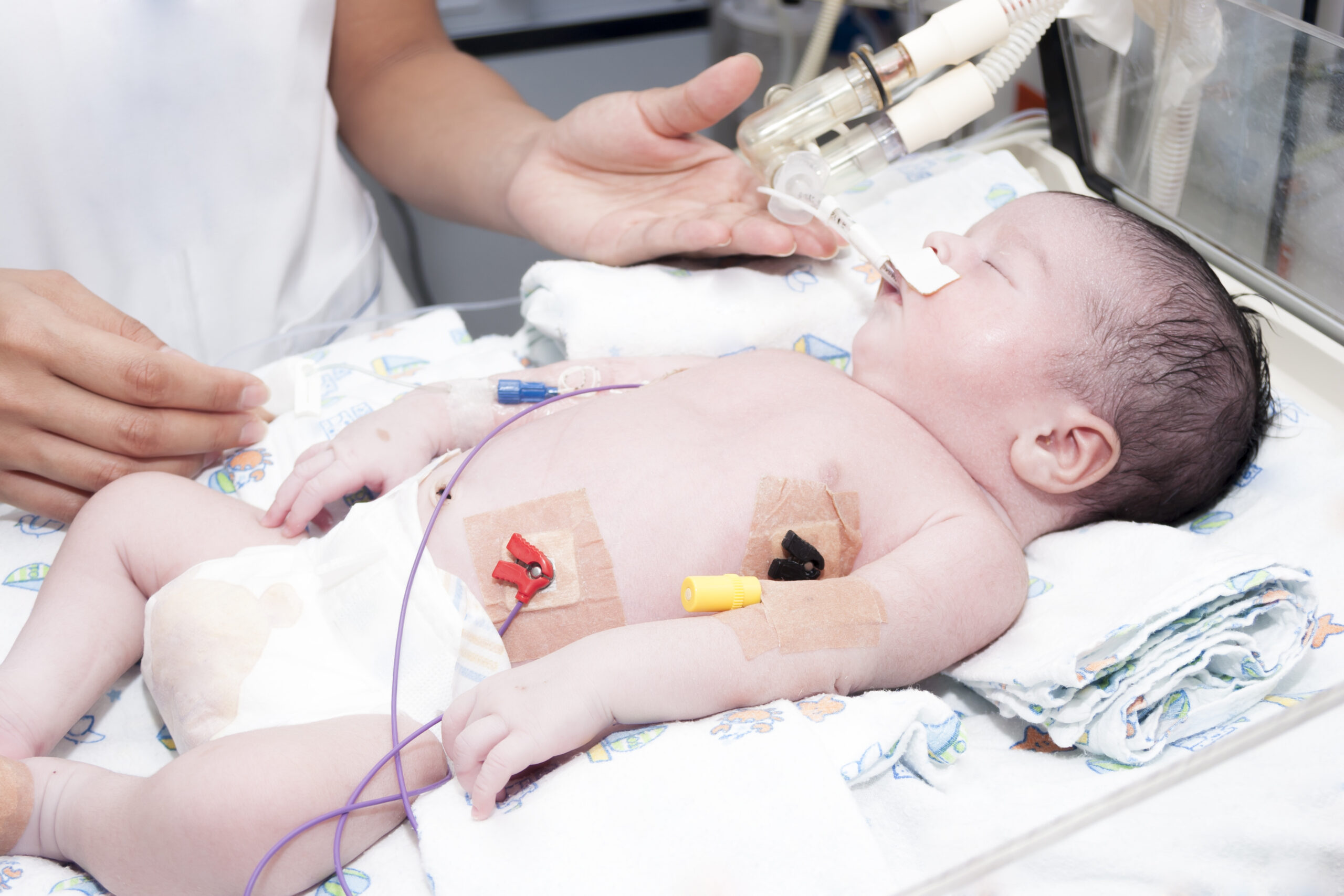Chapter 1: Neonatal Resuscitation Course Overview
Chapter 1: Neonatal Resuscitation Course Overview
Neonatal resuscitation requires technical knowledge, skills, and teamwork. It takes a complex set of procedures to resuscitate and stabilize the newborn. This study guide’s guidelines pertain to newly born infants transitioning from intrauterine to extrauterine life and to neonates who experience cardiopulmonary arrest during the first week after birth. In this manual, the term newly born specifically refers to infants at the time of delivery. The term newborn or neonate refers to an infant at any point after birth through the initial hospitalization.

Neonate requiring ventilation.
One out of ten newborns require positive pressure ventilation (PPV) to support initial breathing at birth. Studies estimate that 1 in 1,000 live births require extensive resuscitation with cardiac compressions and medications.1 Due to the high number of births in institutions, every facility must expect to have neonates who require some degree of resuscitation. Therefore, the presence of a neonatal resuscitation team is of the utmost importance during every birth.
Key Takeaway
It is estimated that 1 in 1,000 births require resuscitation. The presence of a neonatal resuscitation team is critical.
1 Aziz K, Lee HC, Escobedo MB, et al. Part 5: Neonatal resuscitation: 2020 American Heart Association guidelines for cardiopulmonary resuscitation and emergency cardiovascular care. Circulation. 2020;142(16_suppl_2):S524–S550.
https://www.ahajournals.org/doi/10.1161/CIR.0000000000000902